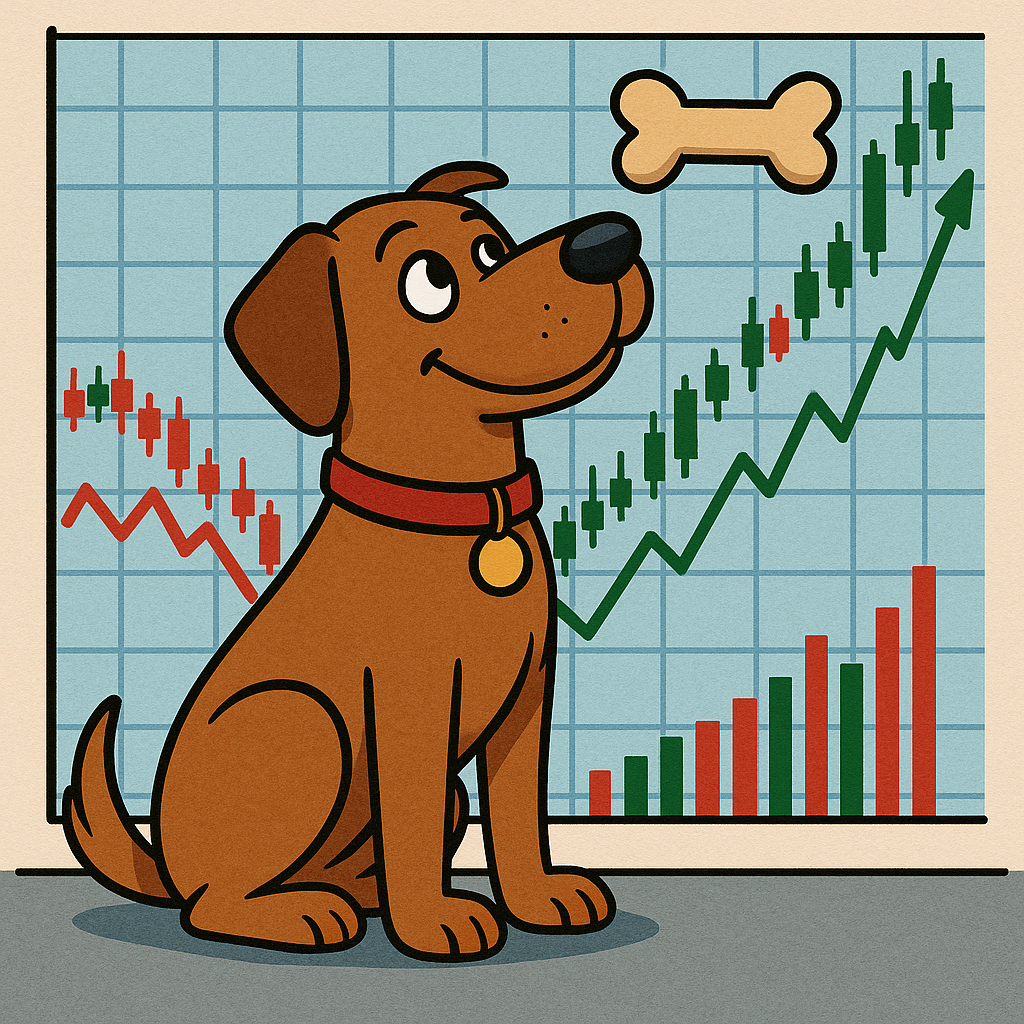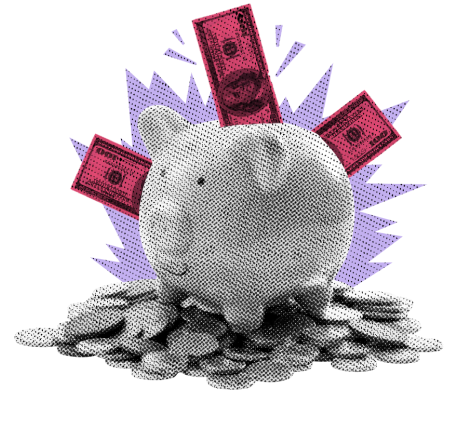
Why margin compression is Wall Street’s biggest under-the-radar risk
KEY TAKEAWAYS
-
Rate cuts are short-term “treats” for markets, not long-term nutrition
-
Tariffs and rising input costs are compressing gross margins
-
Companies are sustaining EPS growth mainly through expense cuts
-
Expense management has limits before quality and productivity decline
-
Sectors with wide margins and pricing power (tech, semis, healthcare) are better positioned
MY HOT TAKES
-
Rate cuts won’t fix structural margin pressures
-
Markets are overestimating the sustainability of expense-driven EPS growth
-
Tariffs are directly hitting autos, retail, and consumer goods
-
Semiconductors and software remain insulated with pricing power
-
Investors need to separate “treats” from real nutrition in their portfolios
-
You can quote me: “Rate cuts are Wall Street’s treats–sweet but not nutritious.”
Marginal. There is a lot of hype out in the market these days. Most of it is around the Fed and what policy changes it may implement in the coming months. Stocks love lower interest rates like my dog Eloise loves treats. Let me explain. Treats are not necessary for Ella’s survival, but she is really motivated by them, sometimes even shunning her nutritious food for them. She will sometimes even miss meals in anticipation of a treat. Calm down dog people, I know you want to share some training tips with me–we have recently been cutting back. When Ella was younger and started skipping meals, we rang up our vet, worried that she may be sick. The doc asked, “is she eating treats,” to which we answered, “with passion.” Then he told us that if she is eating treats, she is eating, and she is OK. However, the caveat was that substituting treats for wholesome kibble or food was unhealthy for Eloise’s long-term health.
Similarly, the equity market is fixated on rate cuts, which may suffice to buoy stocks at the moment, but their long-term nutritional value is limited. Don’t get me wrong, my portfolio wouldn’t mind a rate cut or two, but rate cuts–regardless of how many–are not going to help me sleep better at night.
Yesterday, I wrote about the sleepy-not-so-sexy, beige, Beige Book. I noted that margins were under pressure. The Boston Fed reported, “among manufacturers, output prices increased modestly on average, driven in most cases by tariffs on inputs; however, price increases did not fully match cost increases, as firms were concerned about losing business.” The Kansas City Fed noted “...declines in profit margins, and expectations of sustained price pressures,” as well as “the majority of businesses indicated profit margins contracted in recent months.” The San Francisco Fed relayed that “... in some instances, such as in food services and accommodations, weaker consumer demand led companies to absorb the higher costs.”
These are just a few examples of many instances where companies reported pricing pressure with rising input costs. That means, in plain talk, that their costs are going up (some even mention tariffs as the culprit) and they are unable to pass the cost increases on to their customers. That means, in financial talk, that their gross margins are being compressed. There is no way to candy-coat margin compression. It is what it is. You need flour, water, and eggs to make a cake. If the costs of those go up–for whatever reason–and you can only charge so much for a cake, your gross profit will suffer, and there is very little you can do to fix it.
Let’s keep going with the cake metaphor. If your gross margins are declining and you want to maintain your net or operating margin, you can either sell more cakes or cut your operating expenses. Selling more cakes in a competitive environment is easier said than done. You would have to cut retail prices which would only exacerbate the gross margin problem. You are left with cutting expenses. You can’t get rid of your oven or your bakery–those are fixed costs. What do you suppose is the easiest and largest variable cost? Unfortunately, that is your workforce–salaries. Ok, so maybe you can furlough your dishwasher and have your bakers lend a hand at the sink. Marketing is another variable cost, so you cut back on your marketing budget, and opt to use AI to help you create content. Bookkeeping: also, AI. Customer support: AI as well. THERE, I SAID IT, but please, don’t kill the messenger. Companies are actually reporting that!
If we look back at Q2 earnings season, we saw greater than expected EPS growth despite the existence of these input cost pressures. How can that be? Well, I just explained that to you. Companies have gotten good at maintaining earnings growth through expense management. But we know that–from an economic standpoint–there are macro costs associated with that. What about micro costs? Well, a company can only cut back on labor costs so much before overall productivity or quality declines. You still need two bakers to maintain your supply. The message here is that companies can’t just keep cutting expenses without attracting dire consequences.
So, what can we do to avoid problems in our portfolios? Well, let’s think about it for a second. First, avoid sectors whose margins are highly reliant on tariffed inputs. Find sectors and industries where gross margins are not as reliant on tariffed inputs or whose gross margins are already wide. Within any of those sectors, seek stocks in companies that have pricing power. Those companies can pass more of those costs onto the consumers.
Does this all seem to make sense to you? I am sure that it does. So, here is the next question. Is the market pricing in all this anecdotal, but very real data? Why don’t we have a look. Check out this chart then keep reading.

This chart shows S&P 500 forward 12-month estimates for gross margin (red line) and earnings per share (blue line). You can see how analysts lowered margin estimates in response to the Liberation Day tariff announcement, however you will note that those margin estimates trended higher since, possibly as they were able to get a better assessment of the situation, and as deals were struck. Interestingly, you should note that while EPS estimates declined a bit in April, they tailed up and never looked back starting in June. The only way that this can happen, given that gross margin is declining, is assuming that companies will be able to cut operational overhead or maintain it by selling more goods and services.
Now let’s look at a stark example of the negative impacts of tariff-born cost pressure. Check out this chart, then keep reading. We’re almost there–be patient.

This chart shows gross margins (white line) and EPS (blue line) from the S&P 500 Automobiles and Components Index. This shows clear pressure all around with the introduction of tariffs earlier this year. Though estimates have risen since, they are still lower than they were prior to the new trade policies.
Finally, let’s look at an industry which is likely to be insulated from rising input costs. Have a look at this final chart and follow me to the close.

This chart shows the S&P 500 Semiconductor and Semi Equipment Index. In this stark example, we see forward 1-year gross margin and EPS estimates almost completely unaffected by tariffs and expected to continuously expand. This type of margin expansion justifies the multiple expansion that, in turn, justifies the high valuation multiples that exist in the superlative names in this sub-sector.
So what is the bottom line? Well, bottom lines are expected to be under pressure due to gross margin compression. That compression is caused by pricing pressure and increased input cost pressure, possibly caused by tariffs. Analysts are assuming, based on estimates, that companies will be able to use expense management to continue growing EPS, but we know–even with AI–that companies can only cut so much cost before it adversely impacts performance.
If you agree with this thesis, then we need to carefully screen investments in sectors like autos, consumer discretionary, retail, consumer goods etc. Those will be under pressure. Focus on industries and sectors with high margins and minimal sensitivity to input price costs such as healthcare/pharma, technology, software, and semiconductors, and services. Within those, careful screening should favor companies that enjoy pricing power, brand loyalty, and expanding target markets. It should go without saying, but not all companies are run well, even in growth industries. Many tech companies are growing CAPEX like mad in order to keep up with the demand for AI-related services. It is necessary but must be managed properly. I am quite confident that, based on this high-level strategy, you will find ample opportunities to invest in companies that can continue to grow EPS even in an environment where gross margins may be under pressure.
If you invest in companies that are healthy today and have good prospects to thrive going forward, you will surely sleep better at night. Don’t base your investment theses on rate cuts, but if we do get a few, you might just have a happy new year. As I said up above, we are doing our best to minimize Ella’s treat consumption and she eats her healthy food… almost always. 😉 Everything in moderation.
YESTERDAY’S MARKETS
Stocks gained yesterday as a weak ADP employment number increased hopes for rate cuts–stocks love rate cuts. The ADP number set the stage for this morning's BLS release that drew a bit of controversy last month.

NEXT UP
-
Change in Nonfarm Payrolls (August) is expected to show 75k additions, slightly more than last month’s 73k new hires.
-
Unemployment Rate (August) may have ticked up to 4.3% from 4.2%.
-
Next week: we have Consumer Price Index / CPI, Producer Price Index / PPI, and University of Michigan Sentiment. That doesn’t seem like a lot, but it is given the stakes… and the FOMC meeting that comes in the following week. You don’t want to miss a thing, so check back in on Monday for calendars and details.
.png)

